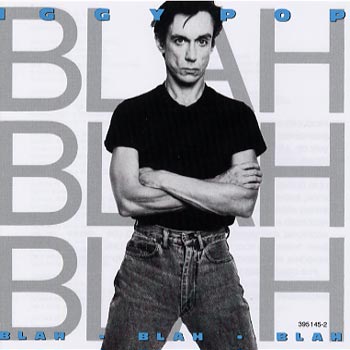
/s3.amazonaws.com/arc-wordpress-client-uploads/sfr/wp-content/uploads/2020/02/17120618/Sonic.jpg)
(It’s better than you think.) The commercial moves continued with 1988’s metallic, Bill Laswell-produced Instinct and 1990’s Don Was-helmed Brick By Brick, on which Iggy strove for Boomer-rock respectability, complete with a backing band of LA studio pros and guest spots by Slash, Duff McKagan, and the B-52s’ Kate Pierson. Two years later, in 1986, Bowie produced Blah-Blah-Blah, Iggy’s attempt at a gleaming ’80s rock album. In the interim, he survived thanks to royalties from Bowie, who covered “China Girl” (from The Idiot) on 1983’s Let’s Dance, and “Tonight,” “Neighborhood Threat” and “Don’t Look Down” on 1984’s “Tonight,” while co-writing two more songs, “Tumble And Twirl” and “Dancing With The Big Boys,” with him.

His 1982 release, Zombie Birdhouse, was a weird, arty collaboration with Blondie’s Chris Stein and Clem Burke that would be his final statement for four years. Iggy spent the first half of the ’80s attempting to strike out on his own with the New Values, Soldier and Party albums, only the first of which was any kind of triumph the others combined self-pastiche with poorly chosen covers (“Sea Of Love,” “Time Won’t Let Me”).
#Iggy pop blah blah blah tv#
Bowie even played keyboards on the subsequent tour, documented on one of the most half-assed live albums of all time, TV Eye: Live 1977.

Eager to retreat from the unmanageable success of his own Ziggy Stardust and Thin White Duke personae, he dragged Pop to Berlin, where he produced Iggy’s first two solo albums: The Idiot and Lust For Life, released in March and September of that year, respectively. In 1977, though, Bowie stepped into the breach again. By the following year, the Stooges were fully dead, and Iggy was about to vanish down a rabbit hole of heroin addiction. Sadly, neither album sold very well, and it was up to fan and friend David Bowie to attempt CPR on Iggy’s career with 1973’s Raw Power - the first of many such interventions. The Stooges effectively ended the ’60s with their sullen, minimalistic self-titled debut, produced by the Velvet Underground’s John Cale they launched the ’70s with the follow-up, the life-altering Fun House, produced by Don Gallucci of garage-rock one-hit wonders the Kingsmen (“Louie Louie”). Iggy’s art balances primitivism and smart popcraft (no pun intended), and avant-gardists have frequently been drawn to his unique fervor.
#Iggy pop blah blah blah full#
From that moment on, the Iggy cult - small, but fervent - was in full force as the man himself spent show after show flipping, writhing, diving off the stage, and gashing himself with broken glass, while still managing to deliver shockingly smart and perceptive lyrics in a leonine baritone. ( Watch Henry Rollins, no slouch as a live act himself in the Rollins Band days, describe what it’s like to share a bill with Iggy.) He first vaulted into the public consciousness in 1970, when the Cincinnati Pop Festival was broadcast on TV and a shirtless Iggy walked out into the audience, balancing on their hands, caught a jar of peanut butter hurled from the darkness, and began smearing it on his chest, while onstage his band the Stooges kept right on cranking out their slablike, psychedelic, grunge-inventing riffs. Since 1969, his whirling, explosive live performances have set a standard that 99 percent of rock artists have utterly failed to meet. Pop himself allegedly disowned Blah-Blah-Blah as a result of all this, describing it as a Bowie album in all but name that he just happened to sing on (paralleling a longtime criticism of The Idiot).Iggy Pop is the beating heart of rock ‘n’ roll. With the benefit of hindsight, it’s easy to see that, much like how The Idiot presaged Bowie’s experimental electronic album Low, Blah-Blah-Blah is a direct prototype of the boisterous synth-rock that would define Bowie’s Never Let Me Down the following year, right down to featuring the co-production of David Richards and the musical assistance of Erdal Kızılçay, the latter of whom would remain a close collaborator of Bowie’s all the way until 1.

The third and final collaboration between Iggy Pop and David Bowie, Blah-Blah-Blah stands as a marked contrast between Pop’s previous Bowie-produced albums, trading out the pioneering industrial rock of The Idiot and the hard rock of Lust for Life in favor of synth-laden dance rock in line with the zeitgeist of 1986.


 0 kommentar(er)
0 kommentar(er)
